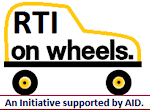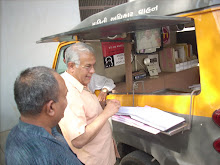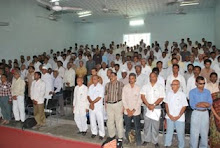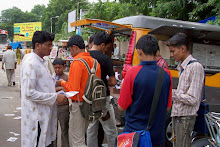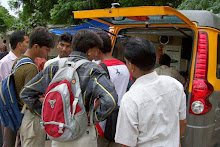Scroll.in: Rokibuz Zaman: Assam: Tuesday, October 25, 2022.
Over the last year, many Desi Muslims in Lower Assam have got legal notices in decades old cases, asking them to appear before foreigners tribunals.
It was drizzling when 60-year-old Sader Ali rushed in from the fields on the afternoon of October 9. He had heard someone from Guwahati was visiting their home to listen to their story.
Ali’s 12-member joint family lives in Ramraikuti I village in Lower Assam’s Dhubri district. It is on the international border between India and Bangladesh and just 100 metres from the Assam-West Bengal interstate border.
Ali and his older brother, 66-year-old Mujam Sheikh, are tenant farmers. When it is not sowing or harvest season, they try to find work as daily wagers. They belong to the “Desi” Muslim community – a group recently designated by the government as “indigenous” to Assam.
But on July 30, two people in civilian clothes turned up at their home – they said they were from the local Agomoni police station and that four members of Ali’s family were under scrutiny as suspected foreigners. The four notices were handed out to Ali and his wife, 51-year-old Molina Bibi, and Sheikh and his wife, 55-year-old Saleha Bibi.
They had to go to the Foreigners’ Tribunal in Dhubri town to prove their citizenship. Foreigners’ Tribunals are quasi-judicial bodies tasked with deciding on matters of disputed nationality.
“It was a shock like an earthquake,” said a weeping Ali. “It is a matter of shame. We are Indians and there is no question about it. My father has a school certificate from 1947, he worked in the 1950s, his name figured in the 1951 NRC and he also voted in 1958.”
The NRC or National Register of Citizens is a list of Indian citizens living in Assam. First compiled in 1951, it was updated in 2019.
“We have been living here since we were born,” said Ali. “My father worked in a government office and used to get Rs 7-Rs 10 as salary per month. Now, his sons are served with notices to prove their nationality. We don’t have money. The government does not help us in any way. Instead, it troubles us by asking to prove our nationality.”
Ali’s family is not the only one in this predicament. According to a border police official at the Agomoni police station, at least 150 families living within its jurisdiction have been served notices this year.
Most belong to the Desi Muslim community. Considered native to Lower Assam, Desi Muslims trace their roots to the kingdom of Kamrup and local tribal communities. They are believed to have converted to Islam around the 13th century.
According to officials of Assam’s border police, most of these notices were connected to old cases that went back over two decades.Sader Ali is a tenant farmer who also does daily wage labour to get by. Photo: Rokibuz Zaman
Old cases, long shadows
Assam’s border police is a wing of the state’s police force dedicated to tracking down so-called foreigners in a state that shares a boundary with Bangladesh and has seen waves of migration. Police stations across Assam have border police units. Besides, there are watch posts installed at border villages.
According to the border police officer at Agomoni, there are now two types of suspected foreigner cases. First, there are cases referred to them by the Election Commission, which has marked certain people “D” – or doubtful – voters. These are people whose citizenship is dubious, according to the commission.
Second, there are cases filed by the police based on village surveys. The police maintain official registers of births, deaths, marriages and village population. People whose names are missing from the records may be investigated as foreigners.
The border police refer these cases to the foreigners’ tribunals. If the tribunals deem the individuals under investigation to be foreigners, they may be held in Assam’s detention centres or deported to Bangladesh, the presumed country of origin. Since Bangladesh rarely accepts them as citizens, many of those declared foreigners in Assam have spent years in detention centres.
A senior officer from the Dhubri border police said they were exempted from the Right to Information Act and not bound to share any data or information on suspected foreigner cases.
“There are about 18,000 pending suspected foreigners’ cases in Dhubri as of today,” the officer said. According to him, no new cases have been initiated by them since 2018.
The current tranche of notices go back to cases from 1997-98, he said. About 450 such notices have been distributed across Dhubri district, he added. For years, these cases had mouldered in the police files. The official, who did not want to be identified, surmised that the sudden surge in notices might be related to the fact that the foreigners’ tribunal in Dhubri had recently added four new members, as the adjudicating officers are called. The sudden increase in manpower, he claimed, “boosts the functioning of the foreigners’ tribunal”.
According to the officer, most of those who received notices were Muslim, although a few were Bengali-speaking Hindus. “They have been asked to provide documents to prove identity and birth,” he said.
To be considered an Indian citizen in Assam, residents have to prove they or their ancestors had entered the state before March 25, 1971, the start of the Bangladesh war. In border districts like Dhubri, many Bengali-origin residents are often branded “illegal Bangladeshis”.
But, as Ali pointed out repeatedly, theirs was a Desi Muslim family.An ageing Mujam Sheikh and his family have few resources to fight a legal battle.
What inquiry?
In 1971, Sheikh was in Class 9 and Ali was in primary school in Assam. Their father, Bhutto Sheikh, had worked in the local panchayat office and after his death, the job had passed down to their youngest brother, who has been spared a border police notice.
All the brothers made it to the 2019 NRC, which was meant to be a certificate of citizenship and excluded over 19 lakh applicants in the state.
The notices against the family show that the cases were referred by Dhubri’s border police superintendent in 2002, when the border police allegedly conducted an inquiry into their antecedents and the family was unable to produce valid documents.
The family said they did not recall any such inquiry. They vaguely remember everyone in the village was summoned to the police station some 20 years ago but a lot of people paid no attention to the summons, and neither did they. Puzzled, they wonder if that is why they have been handed a notice now.
Ainul Hoque concedes there was an error in the names in the voter lists maintained by the Election Commission. First, Ali’s father’s name was Bhutto Sheikh but in the voter lists it is the same as his own – Sader Ali.
The family only discovered the error this year, when they were trying to link their voter identity cards with Aadhaar, the 12-digit biometric identification number.
“The [name in the] voter card was correct,” said Ainul Hoque. “But the booth level officer blamed us for the error and said that we had forged the voter ID.” There was another discrepancy in the names in the electoral rolls, he said. In the 1985 voter list, Sader Ali’s name is “Abdul Sader”. After the electoral rolls were updated in 1997, it was correctly noted as “Sader Ali”.
“Is it our mistake or the officials’?” asked Ainul Hoque. But if anyone in the family has been marked a “D” voter, they have not been informed of it yet. Ainul Hoque said his family had spent over Rs 20,000 to collect documents from various departments.”
Sheikh and Ali have few resources to fight a legal battle that could go on for years. Sheikh’s son, Saidul Hoque, said he was planning to go to Bihar to find work in the brick-making industry so that they could earn some money for the case.
The case has taken on Ali’s health. “My father fell sick immediately after he was served with the FT notice,” said his 33-year-old son, Ainal Hoque. “There was a sudden drop in his blood pressure. His health continued to deteriorate and he spent five nights at the hospital.
Targeting the poor
According to Habibul Bepari, Dhubri district volunteer for Citizens For Justice and Peace, a human rights group providing legal aid, the pace of serving notices had picked up in August and September.
“Mostly poor, illiterate and marginalised people were forced to prove their citizenship,” he said.
Like Ali’s family, many said they did not even know they were being investigated until they were served legal notices.
Take 70-year-old Neshar Uddin Sheik and his wife, 61-year-old Johira Bibi, who live in Shernagar, about eight kilometres away from Ali’s family. On July 2, they were served a legal notice, which said the border police had referred their case to the foreigners tribunal in 1998.
“In the notice, it is mentioned that we could not produce any valid document for the police during an inquiry or verification,” said Neshar Sheik, who also identifies as Desi Muslim. “But we were not aware of any inquiry or verification. The police never asked or visited our place asking about our citizenship.”
Johira Bibi has been voting since 1985 but now has to establish documentary links with her father. She also has to produce valid documents to prove that her father, who is now deceased, lived in Assam before March 25, 1971. She looked terrified.
“I was married before I turned 18,” she said. “I do not have a school certificate or a marriage certificate. My name does not figure in my father’s land and property documents. We have already spent over Rs 10,000 to gather all the documents, affidavits, and certified copies of voter lists since the year 1951.
‘I don’t have anyone’
For married women and widows – many of whom lack school certificates or property documents and rely on male relatives for proof of identity – the legal notices are an even bigger ordeal.
Aklima Khatun, another Desi Muslim resident of Shernagar village, said she had been voting for about 35 years. Her husband died 20 years ago and she has no children or surviving parents. On July 6, she received a notice saying she would have to prove her citizenship.
Khatun, who makes ends meet from her salary as a domestic worker, is in shock. “I don’t have anyone– why have they done it to me?” asked a sobbing Khatun. “I have gone mad after receiving the notice. I don’t know what to do and where to go.”
The odds are already stacked against 71-year-old Sakina Bibi, a Bengali-origin Muslim from Barpeta district. In Assam, the community is the main target of suspicions about illegal immigration. For Bibi, matters are even more complicated because she only moved to Shernagar village after marrying a Desi Muslim man.
All her documents were in order, she claimed, and she had been voting for years with no difficulty. But then on July 5, she got a notice saying she needed to prove her citizenship.
“The government takes my vote so why are they sending me a notice?” she demanded. “My father, grandfather, no one was Bangladeshi but suddenly I have become Bangladeshi?” she demanded. “Do you really think a person like me comes from Bangladesh to Assam? I’m nearing the end of my life expectancy but now I’m considered a Bangladeshi.”
While smarting at the accusation, Bibi also worries about finding the money to fight her battle. Her husband is bed-ridden and their only son cannot work after he got into an accident. The family got by on government rations. “Amid all these tensions, this notice came,” said Bibi.
For some, the ordeal can last for years. Take 37-year-old Roshida Begum, who sat in the veranda of the Dhubri Foreigners Tribunal one October morning. Khatun’s notice arrived earlier. She had been visiting the tribunal almost every month for the last nine months.
“My husband was a D-voter and passed away in 2016,” said Begum, who identifies as a Desi Muslim. “A week after his death, I got a notice asking me to prove my citizenship. I have all my documents and my name is also included in the [2019] NRC.”
Begum, who has spent over Rs 15,000 in the case, gets by on sewing and government rations. The case has added to her worries. “I don’t have anyone,” said Begum.Roshida Begum at the foreigners tribunal in Dhubri town.
‘Because we are Muslim’
Most families believe they are being targeted because of their religious identity.
“They are harassing us because we are Muslim,” said Ainul Hoque. “Most of the people who were served notices are Muslims. Muslims have been targeted by the police. This system has been created by the government and they are responsible for our suffering.”
When Desi Muslims were officially designated as an “indigenous” community in Assam, many had welcomed the decision. But Ainul Hoque feels it would be of little help in their legal battle.
“We don’t know or understand how the indigenous tag will help us,” he said.
Illias Sarkar, a resident of the Agomoni area, felt differently. The “indigenous” tag, he felt, would help distinguish them from migrant communities.
“Now, the question will be asked: why, despite being a native community and using an indigenous language, are [Desi Muslims] being asked to prove their citizenship?” he said. “This is an advantage. The indigenous tag will give us a separate identity and citizenship problems will go down slowly.”
Sarkar felt the whole process of investigating so-called foreigners was driven by Assamese politics. The state has long seen ethnic agitations. The Assam Movement of the 1980s was born of the anxiety that “foreigners” had taken over “indigenous” lands. Such foreigners had to be driven out so that Assamese language, culture and identity could be preserved, the leaders of the movement argued.
While Desi Muslims of Lower Assam have been tagged as “indigenous”, they have linguistic differences with the people of Upper Assam, the heartland of the movement. The Desi communities of Lower Assam speak their distinctive Goalpariya dialect. These differences have been compounded by an increasingly Hindu majoritarian politics, Sarkar felt.
“They are harassing us for the satisfaction of the majority Hindu communities,” he said. “People in Upper Assam think we are Bangladeshi as we speak Deshi or Goalpariya language.”
The senior Dhubri police officer denied they had targeted people because of their identity. “It is not enough to say you are indigenous, you have to show documents to prove it,” he said. “These Deshi people have been inducted as indigenous recently. But the cases were filed from 1997-’19. Many people, especially indigenous people, don’t want to show documents. But that will only harm them.







